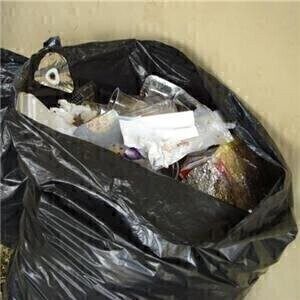Fuel for Thought
What Did the Big Plastic Count Reveal About Plastic Waste in the UK?
Jan 03 2023
In 2016, Daniel Webb became concerned about his contribution to the plastics pollution crisis. All around him in his home-town of Margate, Kent, he’d see all sorts of single-use plastics left as rubbish on the beach or overflowing from public bins. In order to find out just how much of this waste he might be responsible for, Daniel undertook a fairly simple survey, collecting every single piece of plastic that he would usually throw away – for an entire year.
To truly capture what this survey revealed, the waste was used to completely fill the ground-space of a 2,000-seat venue. Having already done his research into plastic recycling, Daniel knew that most of this waste would either be burned or sent to landfill, that exceedingly little of it would be reused in any way. It seems that this demonstration had the most impact on its own creator. As Webb writes: ‘Discovering my personal plastic footprint changed my life and motivated me to think bigger.’
So, after having such a revelation, what did he do next? Well, in May of 2022, he launched the Big Plastic Count, the United Kingdom’s largest inquiry yet into the scale of household plastic waste. It didn’t last nearly as long as Webb’s personal survey, but around 100,000 households stored their plastic waste for a week, with each participating household providing data to researchers using an online portal. All in all, almost 6.5m individual items were thrown away by just 250,000 Britons, which, to give a crude estimate, means that each person disposed of about 30 unique pieces of plastic waste during the week of the study. This is worrying (though not, in retrospect, all that surprising), but it’s only the tip of a plastic-contaminated iceberg.
If one assumes that these counts are characteristic of weekly habits, households are throwing away 97bn pieces every single year, most often disposing of fruit and vegetable packaging, accounting for 1.02m of the 6.5m items collected during the Count, with snack bags, packets and wrappers as runner-up at 1.01m. Such figures suggest that supermarkets and certain food producers are uniquely culpable for plastic waste, and that changed norms in these sectors would render a significant reduction.
But there’s hardly reason for concern if most of this waste is adequately recycled. The problem, of course, is that it’s not. Research cited by the Big Plastic count puts the percentage of plastic waste being recycled in the UK at just 12% – although a higher percentage (17%) is recycled overseas, such a system that clearly involves a secondary environmental impact in the form of carbon emissions. The more likely fate for plastic waste is either incineration (46%) or landfill (25%), because so few commercial plastics are recycled in the United Kingdom. In terms of the waste reported in the Big Plastic Count, 62% was either explicitly excluded from collection or subject to poor norms, meaning that most of the waste that falls into the latter category is too dirty or too mixed with non-recycled plastics to be gainfully reprocessed, often resulting in these items being –you guessed it! – burned or dumped.
It’s not a good look for the UK. In fact, when it comes to the global plastics emergency, Britain gets the world silver medal for plastic waste per capita – well, it’s better than they managed in the World Cup, at least. The country is in dire need of a new strategy for dealing with plastic waste, for the sake of both environmental and public health. In particular, the levers of change are in the hands of the government, some of the larger food brands, and the big supermarkets. In order to tackle this crisis, drastic measures must be taken by these organisations – but recycling, or recyclability, is only one part of the solution. With delays to the setting of new targets by DEFRA, many critics are eager to a specific plastic waste reduction target on the books, which will necessarily establish disciplinary procedures for any exceedances. In particular, researchers for the Big Plastic Count have called for the halving of single-use plastic packaging by 2025, in the hopes that this would force industry into exploring reusable packaging solutions or even just reducing packaging all together. A long way to go, then, but in so many ways, there’s no time to waste.
Digital Edition
PIN 25.3 June/July
June 2024
Analytical Instrumentation - Recent Advances In Various Bench Scale Accelerated Oxidative Testing Methods For Fuels - Petrochemical Industry: Anton Paar Solutions Streamline Processes, Reduce H...
View all digital editions
Events
Jul 30 2024 Jakarta, Indonesia
Jul 30 2024 Jakarta, Indonesia
China Energy Summit & Exhibition
Jul 31 2024 Beijing, China
Jul 31 2024 Chengdu, China
Aug 05 2024 Moon Township, PA, USA


















